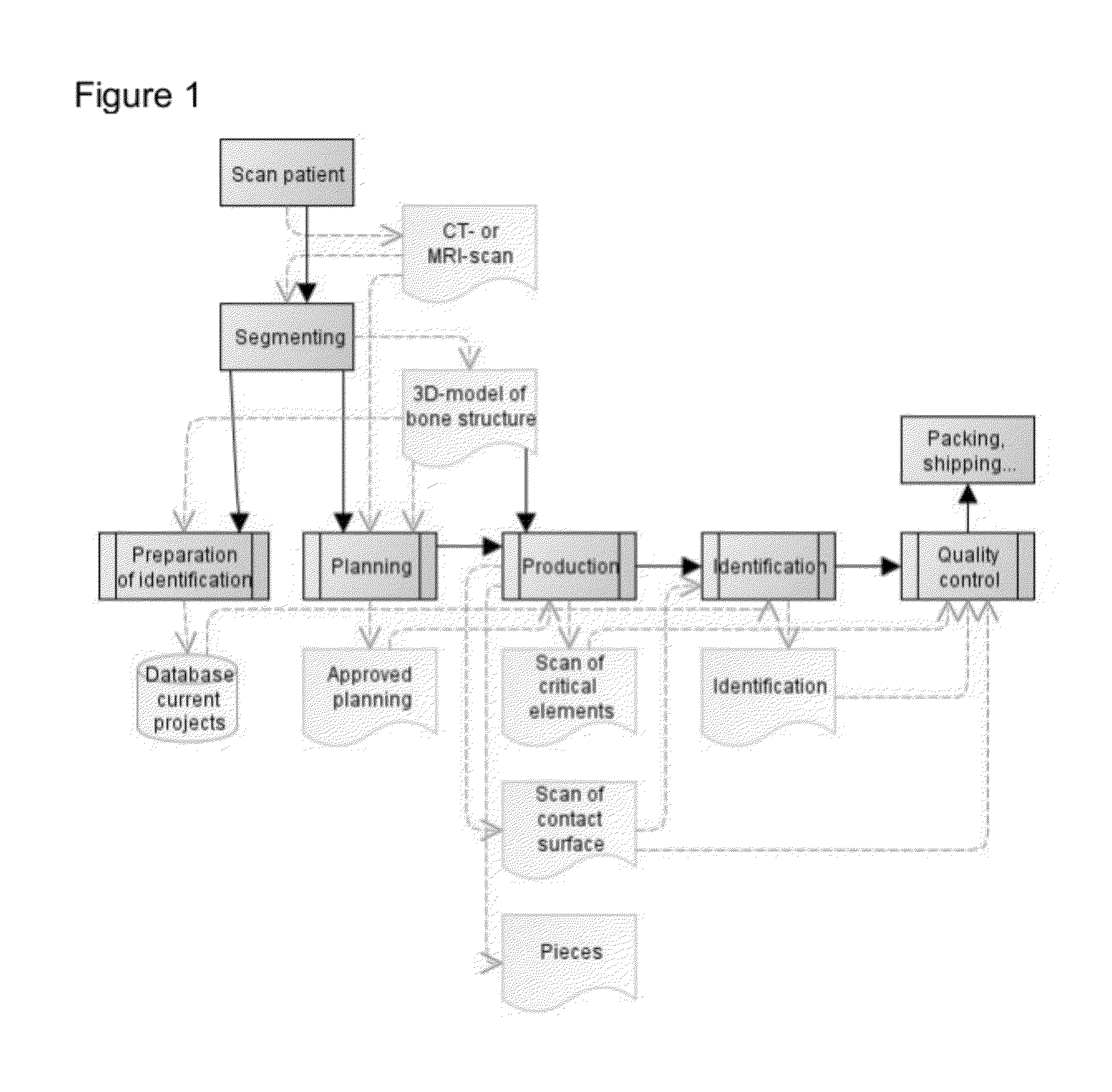Additive manufacturing flow for the production of patient-specific devices comprising unique patient-specific identifiers
a manufacturing flow and additive technology, applied in the field of patient-specific medical devices, can solve the problems of reducing the added value of patient-specificity or the device itself, almost blindly relying on failsafe production, and the lack of guaranteed accuracy of medical tools, so as to achieve more time- and cost-efficient, process enhanced
- Summary
- Abstract
- Description
- Claims
- Application Information
AI Technical Summary
Benefits of technology
Problems solved by technology
Method used
Image
Examples
examples
[0163]FIG. 1 provides an overview of a specific embodiment of the optimised production methods according to the invention, which relates to the production of a patient-specific surgical guide. Similar steps can, however, be described, for instance for a production process according to the present invention for patient-specific implants.
[0164]The overview in FIG. 1 first shows a number of steps that precede the actual creation of the template, namely:[0165]collection of three-dimensional patient-specific images (scanning the patient and segmenting the images)[0166]planning the surgical procedure based on the three-dimensional patient-specific images (and the patient-specific values derived thereof). This includes the definition of, for instance, drilling routes, pin positions and saw cuts. And[0167]approval of the planning by the physician.
[0168]Subsequently, FIG. 1 describes the steps for creating the guide, namely:[0169]the design of the guide for support of the surgical procedure ...
PUM
 Login to View More
Login to View More Abstract
Description
Claims
Application Information
 Login to View More
Login to View More - R&D
- Intellectual Property
- Life Sciences
- Materials
- Tech Scout
- Unparalleled Data Quality
- Higher Quality Content
- 60% Fewer Hallucinations
Browse by: Latest US Patents, China's latest patents, Technical Efficacy Thesaurus, Application Domain, Technology Topic, Popular Technical Reports.
© 2025 PatSnap. All rights reserved.Legal|Privacy policy|Modern Slavery Act Transparency Statement|Sitemap|About US| Contact US: help@patsnap.com



